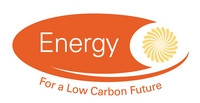Projects
Projects: Custom Search |
||
| Reference Number | UKRI-126 | |
| Title | Spintronic Reservoir Fusion: connecting heterogeneous magnetic nano-devices for energy-efficient computing | |
| Status | Started | |
| Energy Categories | Not Energy Related 80%; Energy Efficiency (Industry) 20%; |
|
| Research Types | Basic and strategic applied research 100% | |
| Science and Technology Fields | PHYSICAL SCIENCES AND MATHEMATICS (Computer Science and Informatics) 50%; ENGINEERING AND TECHNOLOGY (Electrical and Electronic Engineering) 50%; |
|
| UKERC Cross Cutting Characterisation | Not Cross-cutting 100% | |
| Principal Investigator |
Matthew Ellis University of Sheffield |
|
| Award Type | Standard | |
| Funding Source | EPSRC | |
| Start Date | 01 January 2025 | |
| End Date | 31 December 2027 | |
| Duration | 36 months | |
| Total Grant Value | £563,599 | |
| Industrial Sectors | Unknown | |
| Region | Yorkshire & Humberside | |
| Programme | NC : Physical Sciences | |
| Investigators | Principal Investigator | Matthew Ellis , University of Sheffield |
| Other Investigator | Thomas Hayward , University of Sheffield |
|
| Web Site | ||
| Objectives | ||
| Abstract | Artificial intelligence (AI) is at the forefront of many technological innovations across nearly all sectors of modern life. However, it mainly relies on large, expensive cloud compute centres that consume considerable energy, which limits its adoption in smaller, remote devices that demand real-time processing. Neuromorphic computing is a solution to this problem, where bespoke, unconventional hardware is used to naturally perform the computational tasks in an efficient manner. Spintronic systems have considerable benefits for this paradigm. They can be manipulated with low energy cost, their state can remain unchanged for long periods of time, they exhibit complex dynamics and can be integrated into conventional electronic systems easily. Recently, spintronic systems have garnered interest in the physical reservoir computing (PRC) field. PRC is an unconventional computing paradigm aimed at using fixed systems to perform the necessary processing, reducing the training complexity and avoiding the manufacture of large scale physical neural networks. However, despite the number of successful demonstrations of spintronic reservoir devices, there are challenges in realising them as the next generation of AI computing platforms. The computational power of a single device is hard to optimise for all the competing properties of an ideal reservoir. Recent computational studies have shown that by feeding the output of one reservoir device into another creates richer properties useful for complex real-world problems. This project’s vision is that for spintronic PRC to become a revolutionary technology it must expand beyond single reservoir systems and that diversity in the component devices can be exploited to give computational power greater than the sum of its parts. These heterogeneous spintronic device networks (HSDNs) lie in a middle ground between monolithic one device reservoirs and highly distributed artificial neural networks, with each node more complex than a single neuron and diversity in how they process data. This mimics how the human brain has evolved, with specific wiring for certain elements, such as the visual pathway, working together as a complete cognitive system. Therefore, the project aims to exploit a range of spintronic reservoirs devices, “fusing” them to create complex heterogeneous networks of reservoirs where the individual components contribute different characteristics. To achieve this aim, I will use machine learning models to first learn the behaviour of a range of spintronic devices. These models will be used to first characterise the systems to understand their heterogeneity. Then they will be used as part of a training algorithm to optimise the topology and connectivity of the networks. Throughout this project there will be additional experimental research to provide a wider set of spintronic systems to learn, perform key validation of the models and to demonstrate experimentally a proof-of-principle of the heterogeneous networks. This comprehensive approach will showcase the performance of these "fused" reservoirs on cutting-edge tasks, such as human-machine interaction and multi-modal activity recognition, paving the way for a more energy-efficient and powerful era of AI computing | |
| Data | No related datasets |
|
| Projects | No related projects |
|
| Publications | No related publications |
|
| Added to Database | 16/07/25 | |



